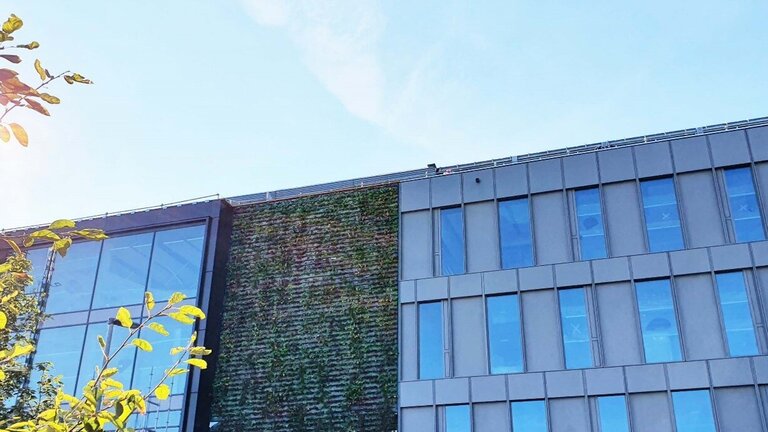Planting greenery not only on roofs but also on façades has a positive effect on the climate of the immediate surroundings and on biodiversity, especially in our cities. The building does not heat up as much, insects settle at the location and the plant walls filter pollutants and insulate noise. Another plus point: the greenery creates a feel-good atmosphere. Drees & Sommer SE, the planning and consulting company specializing in construction and real estate, uses its new OWP12 office building to demonstrate how a planted façade even works on the north side of a building. It is currently building an innovative showcase property for its own use at its headquarters in the German city of Stuttgart.
Covering an area of more than 100 square meters, the green facade on the new office building in Stuttgart’s Vaihingen district extends over three stories to a height of 12 meters. ‘In many cities – including Stuttgart –, the greening of facades will be a requirement in future development plans. Through our new building, we not only want to set a good example, but also to be involved in developing the basis for implementing these requirements. We are testing it on our own building as a key element in this development,’ explained Thomas Berner, who heads the OWP12 project at Drees & Sommer.
OWP12 – Designed as a Net Plus Energy Building
Photovoltaic systems on the roof and on the south-facing facade, a newly developed, highly insulating façade construction, geothermal energy via geothermal boreholes, and a greened north-facing façade: when Drees & Sommer moves into its new offices in Stuttgart’s Vaihingen district, employees will work in a plus energy building that generates more energy than it consumes in operation. It will also comply as far as possible with the Cradle to Cradle requirement for recyclability. This means that it meets all the sustainability requirements that are expected in the future. This also applies to modularization and digital processes and services. The four-story building with a gross floor area (GFA) of around 7,000 square meters is costing EUR 22 million. It features a large conference section and zones for employees such as a terrace, a cafeteria and a staff restaurant on the first floor.

